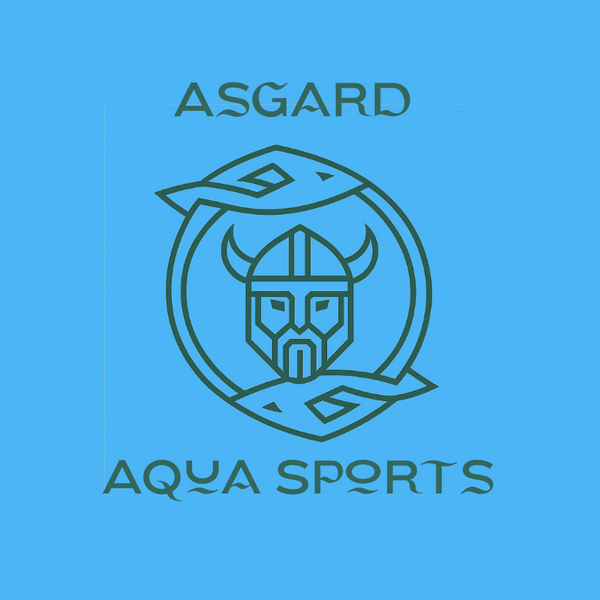Stand-up paddleboarding (SUP) is a versatile and enjoyable water sport, offering a blend of a full-body workout and a relaxing experience on the water. With numerous brands, types, sizes, price ranges, and quality levels of paddle boards available, choosing your first paddleboard can be overwhelming.

This guide will lead you through the basic steps to help you get started. So, let's dive in.
Types of Boards
There are different types of paddleboards available in the market, and deciding the specific type of paddleboarding you prefer will help narrow down your options early on.
All-Round
Ideal for beginners or families seeking a versatile SUP. This one is designed for short runs, waves, and occasional flat water distances. The optimal size for such SUP is 10’6", which is a balanced choice for all-round excellence.
Touring
Tailored for extended straight-line excursions, touring boards demand fewer paddle strokes and often feature bungees for convenient storage. A 12’6" board is exemplary for touring pursuits, providing superior stability.
Surfing
Crafted with a narrow tail, enhancing responsiveness to foot pressure during turns. SUP surfboards boast reduced volume, emphasizing agility for quick manoeuvres on the waves.
Racing
For enthusiasts craving long-distance thrills and heightened speed. These boards are typically narrower in width and exceed 12’0" in length, ensuring an aerodynamic edge on the water.
Rapids / Whitewater
Designed for adventurers tackling challenging water conditions. These boards, shorter for swift manoeuvrability, prioritize durability for navigating obstacles with finesse.
Kids
Boards with reduced volume tailored for lighter riders. Their dimensions ranging from 8’ to 10’ ensure manageability, with a maximum thickness of 4".
Yoga / Fitness
Strategically designed for stability, these wide Yoga boards facilitate a core-intensive workout. Harmonize with your body's movements while staying attuned to the board's responsiveness.
Inflatable Vs. Solid
Inflatable boards are quite practical when storage or transportation space for your SUP is limited and takes only about 10 minutes to inflate them. Their robust construction ensures they can handle occasional bumps.
In contrast, solid boards are more suitable for larger paddlers or those carrying extra gear.
Board or Hull Shape
The hull, or body, of a paddle board, significantly influences its performance on the water, with most SUPs featuring either a planing hull or a displacement hull.

Choose a planing hull (which is flat and wide) if you want high manoeuvrability in leisure paddling, surfing, yoga, and whitewater adventures.
On the other hand, opt for a displacement hull for improved efficiency and a faster ride. These boards require less effort to paddle compared to planing hulls, making them suitable for activities like fitness paddling, SUP touring, camping, and racing.
SUP Length
Select board length based on intended use; shorter (under 10’) for surfing, medium (10’ to 12’) for all-round activities and SUP Yoga, and longer (12.6’ +) for fast paddling and extended tours.

SUP Width
A wider board offers more stability, while a narrower one can be faster and more manoeuvrable. SUPs come in widths ranging from 25 inches to 36 inches, catering to different preferences and needs.
So, balance stability and speed by adjusting the board width according to the paddling type, body type, and experience level.
SUP Thickness
The thickness of a paddle board significantly influences weight capacity and overall volume. In general, a thicker board tends to support more weight.
For example, if you're a smaller individual seeking a long displacement board, selecting a thinner board ensures a lower overall volume. This choice aligns with proper weighting, contributing to optimal performance.
Single Layer Vs. Double Layer
When it comes to inflatable paddle boards, the materials used in their construction significantly impact performance, weight, and durability.
Generally, single-layer boards are easier to handle on the water, making them lightweight and more portable, while double-layers enhance durability and overall performance, providing a stronger and more damage-resistant paddleboard.
SUP Fins
Explore fin setups based on your preferred paddling style.
Single Fin
A large fin located at the back centre of the board near the tail, ranging from 8” to 10” in length, aiding in navigation and wave engagement during surfing.
2+1
It features a larger centre fin and two smaller fins on each side, commonly used for surfing.
3 Fin
Known as a thruster, r, this setup consists of three fins of the same size, offering good control in the surf and aiding straight tracking on flat water.
Note: Inflatable SUPs can accommodate any fin configuration mentioned, with the distinction that fins are either detachable or composed of flexible rubber.
By considering these aspects and referring to our comprehensive guides, you'll be well-equipped to make the optimal choice based on your needs and preferences.

